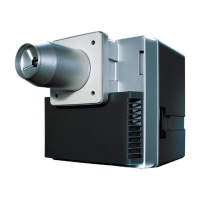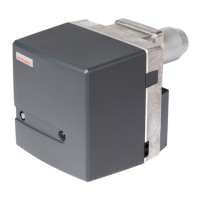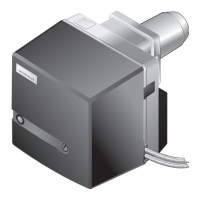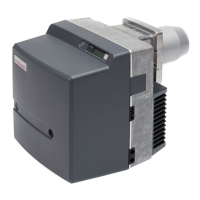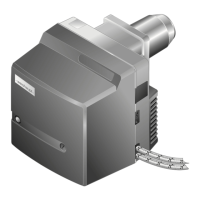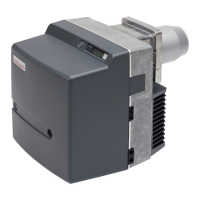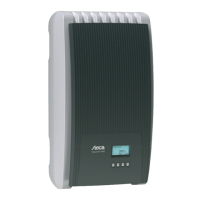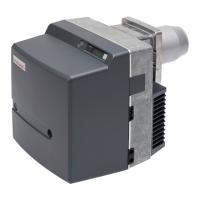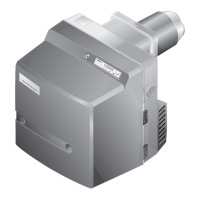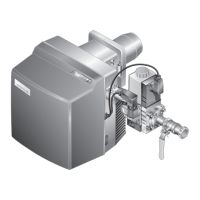Do you have a question about the Weishaupt WL5/1-B H-2LN and is the answer not in the manual?
Defines the intended audience and necessary qualifications for using the unit.
Explains symbols used for warnings, actions, and itemization.
Lists causes that exclude guarantee and liability claims for damage.
Specifies suitable applications for the burner and potential hazards of improper use.
Outlines general safety measures for operation and electrical connections.
Requires written approval for any modifications and specifies prohibited alterations.
Addresses noise levels and the need for protective equipment for personnel.
Provides instructions for safe and environmentally friendly disposal of materials.
Explains the designation codes used to identify the burner's specifications.
Details the location and purpose of the serial number for customer service.
Describes the operational principles of the air supply, oil supply, electrical components, and program sequence.
Provides specifications including approval, electrical, ambient, fuels, emissions, rating, dimensions, and weight.
Details requirements for proper installation, including burner/heat exchanger matching and location.
Provides guidance and tables for choosing the correct nozzle based on capacity.
Describes the steps for physically installing the burner components.
Explains the procedure for rotating the burner for specific installation needs.
Details the requirements and procedures for connecting the oil supply to the burner.
Describes the safe and correct procedure for connecting the burner electrically.
Explains the function and use of the illuminated push button on the combustion manager.
Describes the meaning of different illuminated push button colours and states.
Lists conditions that must be met before starting the commissioning process.
Details how to connect pressure and flame signal measuring devices.
Explains how to set the diffuser and air damper based on required burner capacity.
Guides through starting the burner and adjusting combustion parameters.
Outlines final checks, documentation, and operator information after commissioning.
Describes how to measure and adjust excess air, flue gas temperature, and losses.
Provides crucial safety notes and general guidelines before performing servicing.
Outlines component service intervals, criteria, and procedures.
Illustrates different service positions for accessing and working on the burner.
Details procedures for replacing the nozzle, nozzle shut-off, and setting ignition electrodes.
Instructions for removing mixing head, heat exchanger, and setting recirculation aperture.
Procedures for removing/refitting oil pump, fan wheel, motor, and oil pump filter.
Step-by-step guide for safely replacing the internal fuse.
Explains burner fault indications via the illuminated push button states.
Lists common operating issues, their causes, and rectification methods.
Provides a table for converting pressure units like bar, Pa, hPa, kPa, and MPa.
Presents the electrical wiring diagram for the burner's components.
Provides general information and guidelines for installing the oil supply system.
Diagram and list of spare parts for housing and related components.
Diagram and list of spare parts for motor, fan, and air guide.
Diagram and list of spare parts for oil pump, hoses, and fittings.
Diagram and list of spare parts for nozzle, electrodes, and ignition.
Diagram and list of spare parts for control units and ignition system.
